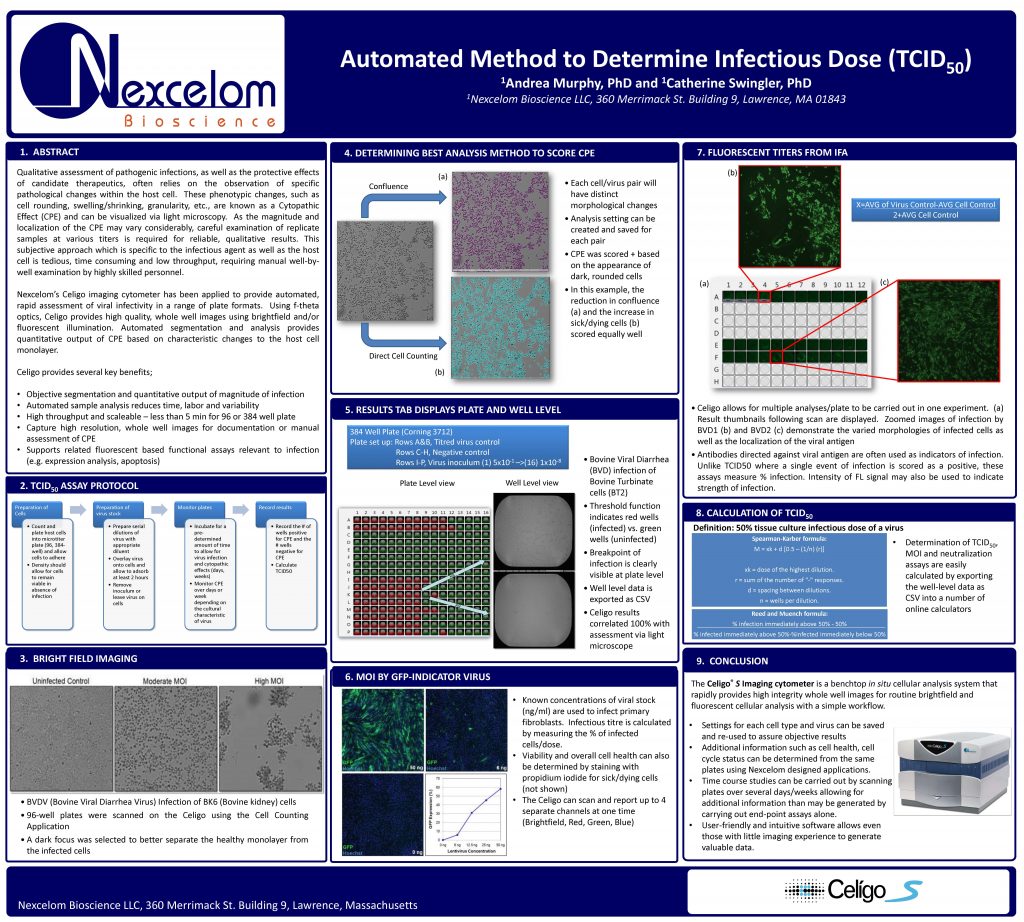Automated Method to Determine Infectious Dose (TCID50)
Andrea Murphy PhD, and Catherine Swingler PhD
Qualitative assessment of pathogenic infections, as well as the protective effects of candidate therapeutics, often relies on the observation of specific
pathological changes within the host cell. These phenotypic changes, such as
cell rounding, swelling/shrinking, granularity, etc., are known as a Cytopathic
Effect (CPE) and can be visualized via light microscopy. As the magnitude and localization of the CPE may vary considerably, careful examination of replicate samples at various titers is required for reliable, qualitative results. This subjective approach which is specific to the infectious agent as well as the host cell is tedious, time consuming and low throughput, requiring manual well-bywell examination by highly skilled personnel.
Nexcelom’s Celigo imaging cytometer has been applied to provide automated, rapid assessment of viral infectivity in a range of plate formats. Using f-theta optics, Celigo provides high quality, whole well images using brightfield and/or fluorescent illumination. Automated segmentation and analysis provides quantitative output of CPE based on characteristic changes to the host cell monolayer.
Celigo provides several key benefits;
• Objective segmentation and quantitative output of magnitude of infection
• Automated sample analysis reduces time, labor and variability
• High throughput and scaleable – less than 5 min for 96 or 384 well plate
• Capture high resolution, whole well images for documentation or manual
assessment of CPE
• Supports related fluorescent based functional assays relevant to infection
(e.g. expression analysis, apoptosis)

